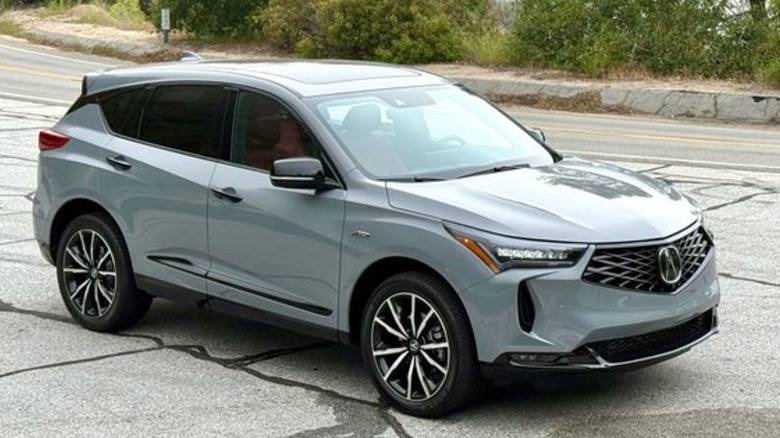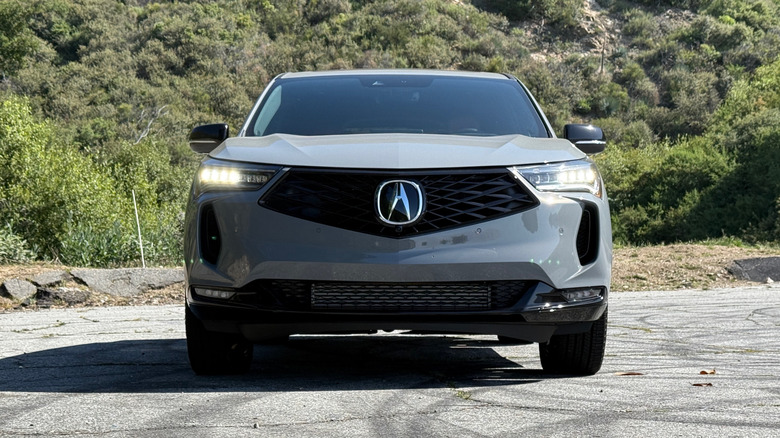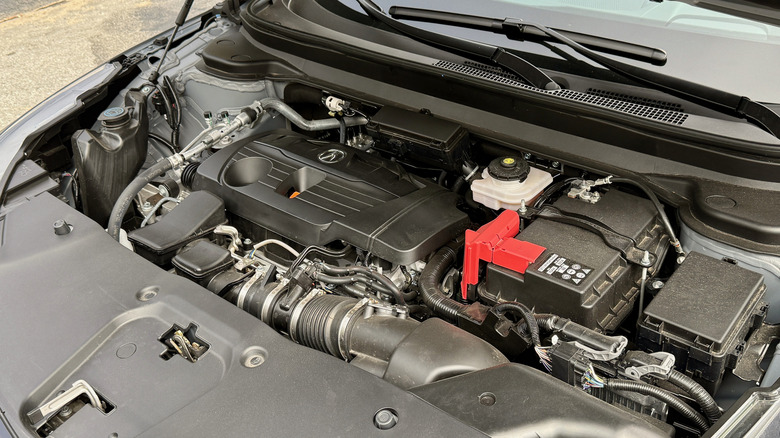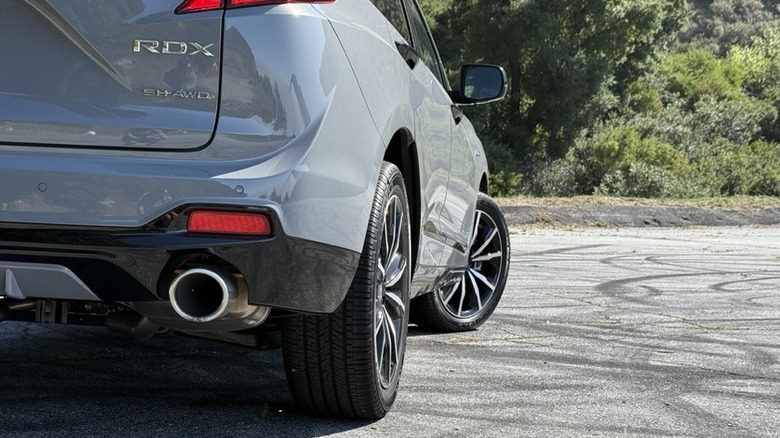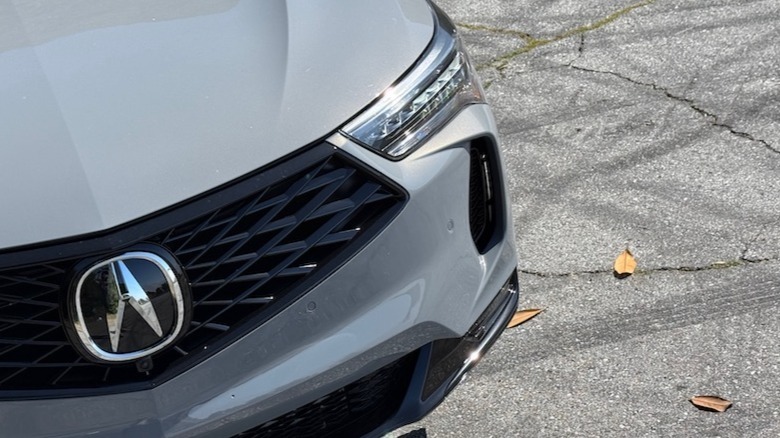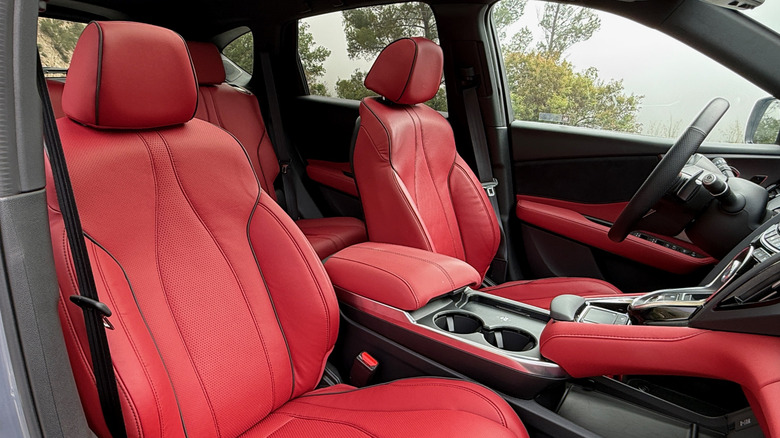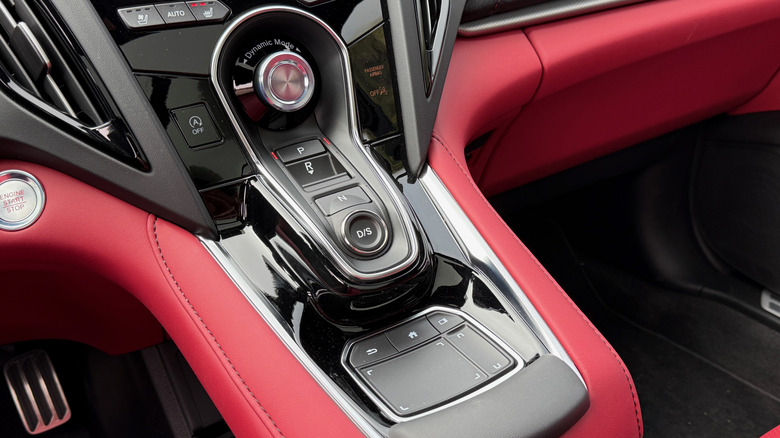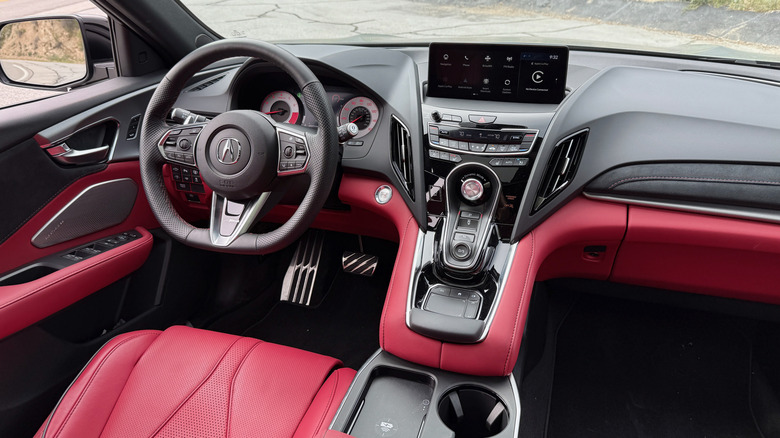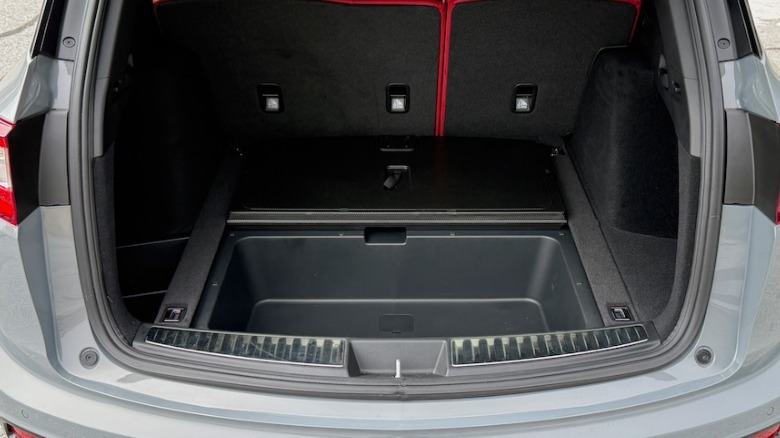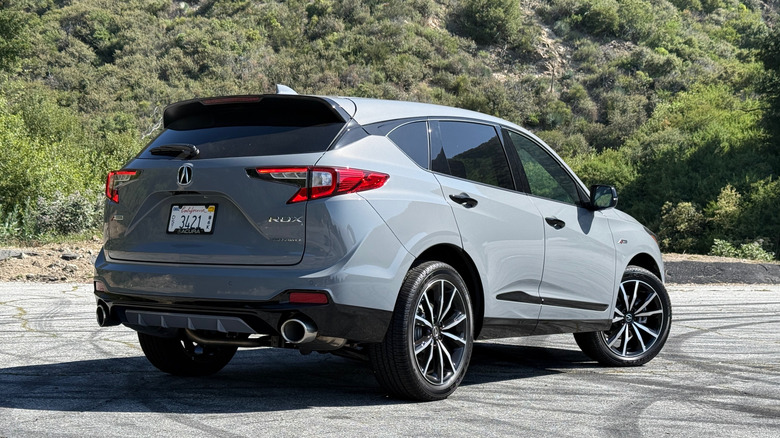2025 Acura RDX Review: Refreshed SUV Keeps What's Most Important
The Acura RDX has been refreshed for 2025, given a new front grille, an updated center console, and some tech updates that make it a bit easier to use your smartphone when it's connected to the luxury SUV's center screen. When you consider the fact that it's been on sale in pretty much the same form since it debuted over 7 years ago, though, that doesn't seem like much of an update.
No fancy new engine or high-performance Type-S trim after all this time? No fuel-sipping hybrid powertrain? No big center touchscreen to replace the dated interface? Nope, none of it.
Instead of a full overhaul, the new RDX sticks with a tried and true formula: provide impressive value, offer a premium look and feel, and remain fun to drive. Within those basic parameters, the RDX nails it. The updated styling that puts it in line with the rest of the Acura lineup is sleek. The grille looks good. The center console is spacious and the Acura SUV provides the kind of robust small-item storage you'd typically expect from the pragmatic automaker. The powertrain is somehow still exciting after all these years, and the interior feels relatively upscale in the face of an aging and tough-to-use center console/infotainment design.
Pricing is appealing for the class
There are five trims for the 2025 RDX: base, Technology, A-Spec, Advance, and A-Spec Advance. Base trim levels of the RDX start at $46,050 (including $1,350 destination fee), which is highly competitive for the class. Move up to the mid-level A-Spec model and it will set you back $51,650. The car I tested for a week was at the top of the trim-level ladder: the A-Spec with the Advance package and it has an MSRP of $55,800.
Here's how that pricing plays out when it comes to safety equipment: the base trim gets most of Acura's safety equipment like lane departure warning, forward collision warning with collision mitigation, adaptive cruise control, blind spot monitoring, and lane-keep assist. For the extra bits like front and rear parking sensors and low-speed emergency braking, you'll need to go up to the Technology trim or higher. The driver aids are a bit sensitive, but there weren't any false alarms or aggressive warnings during my test.
Venturing outside the driver safety aids, standard equipment includes a 10.2-inch center screen (notice I didn't say touchscreen — more on that later), wireless Apple CarPlay and Android Auto, heated front seats, leatherette upholstery, and a panoramic sunroof. Mid-level trims add fog lights, ventilated front seats, an upgraded stereo, heated rear seats, and a wireless charging pad for your phone. At the top of the ladder you get a head-up display, and remote start.
Power and fuel economy
The turbocharged 2.0-liter four-cylinder engine under the hood of the 2025 Acura RDX is an old favorite. It's the same engine that was placed in the 2019 model (that's when the RDX was redesigned last) and it continues to provide the same power on every trim level; 272 horsepower and 280 lb-ft of torque go to all four wheels via a 10-speed automatic transmission. That's not as robust as some of the V6-powered SUVs in the class, but it's enough to get the RDX moving at a decent pace.
Acceleration is swift, with quick shifts from the 10-speed auto, and there's a nice, low growl from the comically-oversized twin muffler tips. More than just adequate, the four-cylinder is entertaining enough for a bit of enthusiastic driving on any local b-road.
Most trims of the RDX get similar fuel economy estimates from the EPA: the A-Spec with the Advance Package is estimated to return 23 mpg combined (21 city/26 highway). Those aren't exactly frugal numbers for the class and my average was a bit lower during my week with the RDX, although I admittedly wasn't super-light on the throttle. Seeing as how there's no upgrade in power available, nor is there an option for a more fuel-efficient version via a hybrid powertrain, some of the RDX's luxury rivals have a leg up when it comes to choice — even if the standard powertrain here is still pretty entertaining.
Handling and performance are highlights
One of the most impressive things about my time with the RDX was the sporting nature of this family-friendly SUV. On top of being powerful enough to maintain an enthusiastic pace through the mountains, the RDX's underpinnings were able to match the engine's energy. Driving the RDX through corners, it felt smaller than its exterior dimensions would suggest. I could easily place the RDX within its lane of travel and anticipate entry and exit speeds – almost like I was in a sporty compact sedan.
After throwing just a few aggressive corners its way, I was confident in the RDX's abilities to navigate multiple changes in direction swiftly. That's strong praise for an SUV of its size: it does weigh over 4,000 lbs, so based on specs alone you might not expect it to be so light on its feet. The responsive and well-weighted steering and relatively flat handling through corners meant that I could carry plenty of speed up curvy roads without needing to goose the gas or hammer the brakes. A higher-performance variant would help the RDX compete with some more-expensive luxury rivals, but it's not too bad as-is.
A well-rounded cabin experience
More than just some sporty characteristics, the RDX has a comfortable and quiet interior that has all the luxury touches you'd expect. Up front, there are supportive 16-way power seats with lots of adjustability range, built with plush padding and structured in a way that keeps you stationary around aggressive corners.
Heated front seats are standard on every trim, but on the top trim, the front seats are heated and ventilated, the steering wheel is heated, and the rear seats get a heating function too.
On the highway, large bumps and road imperfections make their way into the RDX's cabin, but smaller disturbances are shrugged off well enough by the relatively meaty tires. Sport drive modes make the ride pretty firm, so it's best to leave those for the canyons, while the comfort setting is much better for the everyday driving responsibilities. Road trips, daily commutes, and everything in between is light work for the RDX.
Touchpad: very bad. Stereo: very good.
The RDX is one of just two Acura vehicles still soldiering on with its dated center-console touchpad interface (the other is the TLX sedan). In fact, the RDX was the first Acura vehicle to get the "True Touchpad Interface" back in 2019 and it's a relic that's being phased out over time. The MDX, Integra, and even the new entry-level ADX SUV I drove earlier this year, all get touchscreen UI's that are easier to use, more intuitive, and require less attention when making selections on the go.
On top of being difficult to operate, the screen is relatively small and far away on the dashboard. Voice controls are a suitable replacement and the RDX understands natural language pretty well, but I'll be happy once this particular tech feature is done away with.
Thankfully, the team behind the RDX appreciates good audio, because there are several impressive options for the stereo. The base RDX comes with a 9-speaker system; next up is a 12-speaker ELS Studio option; and on the top three trim levels is the 16-speaker ELS system that came with my test car. My biggest gripe with most car stereos is the lack of adequate volume, but there weren't any complaints about that here. The Acura's stereo gets plenty loud and it doesn't lose any audio quality at the top of the range to distortion. As far as I'm concerned, this stereo is at the top of its class.
The interior has more to offer than the touchpad
Complaints about the touchpad aside, there are some friendly bits of human/tech interaction with the RDX. The climate controls were easy to use and the air conditioning blew cold, even on the hottest of blooming summer days in Los Angeles. Every trim aside from the base RDX offers GPS-based climate control settings to go along with the dual-zone automatic climate control.
The gauges are clear, crisp, and easy to read at a glance. The optional head-up display is equally visually pleasing. Interior storage is excellent and well-organized, and there's plenty of cargo space.
Behind the rear seats the RDX has a maximum of 31.1 cubic feet of cargo space and if you fold the second row flat that expands to 79.8 cubic feet: numbers that translate to lots of usable space for luggage of all types. With all that sporty driving, you'll need somewhere to properly store a few bags without your milk and eggs falling out. Under the flat rear cargo floor, there's a subfloor that is easily accessible and makes a great space for groceries.
2025 Acura RDX Verdict
It's well-rounded and likable, but the 2025 RDX has some pretty stiff competition. Recently updated rivals like the Genesis GV70 offer a more modern experience for similar prices, while German competitors like the newest Audi Q5 and Mercedes-Benz GLC-Class up the level of refinement. However, with a premium look and feel, a strong balance of comfort and performance, and good value across the range of available trims, the RDX makes a compelling case for itself in a crowded field.
There's only one available powertrain, and it's not particularly efficient, but it's no slouch when you bury the throttle. Sporty handling characteristics and a comfortable cabin are highlights, too. Interior fit and finish matches the class expectations, and fundamentals like the stereo and climate control are easy to interact with, even if the touchpad is a weak point. If you want a bit of fun in your luxury SUV, the Acura RDX should be on your short list of vehicles to test drive.
